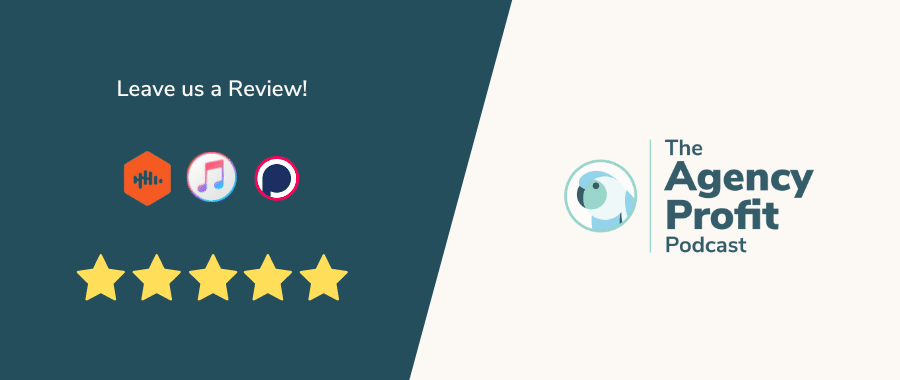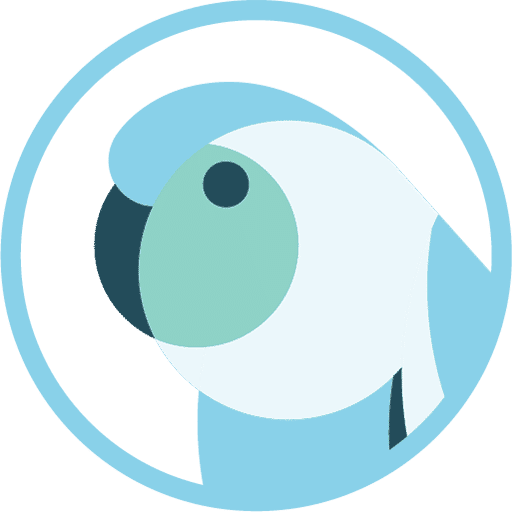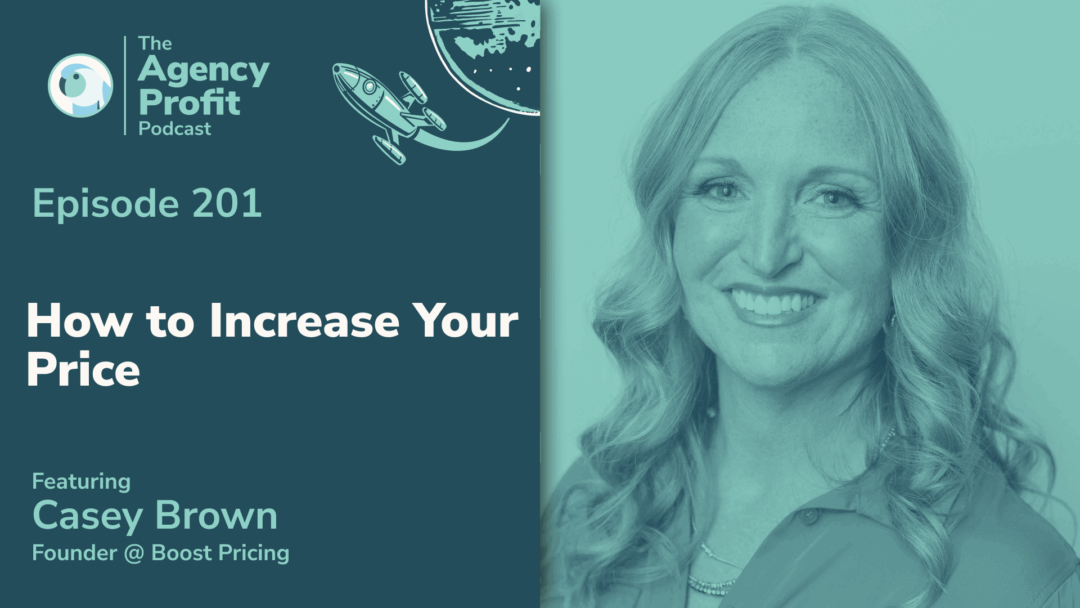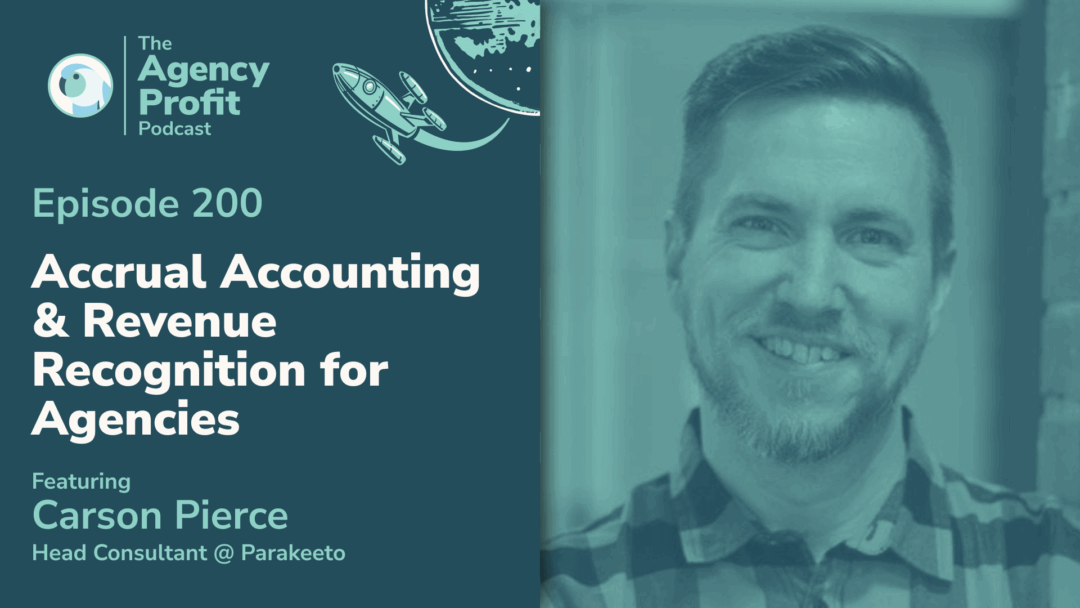Ryan Watson, of Upsourced, chats with Marcel about the Life Cycle of Agencies and how finding focus in your agency is your key to scaling successfully.
About Ryan Watson
The short story? Ryan is an experienced operations and finance leader for creative agencies and venture-funded startups. As a partner at Upsourced, he helps scaling agencies build better plans, see the future, and drive profits.
Prior to Upsourced, he led operations and finance for a large influencer marketing and ad agency, Ahalogy. It’s worth noting that Ryan helped to build Ahalogy to 50+ people and $10M in annual AGI before selling to Quotient Technology (NYSE: QUOT) in June, 2018.
Ryan’s an avid runner, which comes in handy given he’s a Dad to two boys (with a girl on the way). When he’s not chasing them around during the weekends, he can be found coaching their slew of sporting activities.
Points of Interest…
- Ryan’s work with Upsourced Accounting 2:08
- How finding focus within your KPIs builds momentum 3:39
- Identifying your mode to focus your agency 8:26
- Build Mode and the Hierarchy of Financial Needs 11:21
- Where agencies tend to get stuck 16:32
- Ryan’s advice to those feeling stuck in Build Mode 23:06
Ryan’s work with Upsourced Accounting
Before we dive into the weeds of finances, KPIs, and numbers, here’s a little background to what Ryan does at Upsourced Accounting…
“If I only used a few words, I would say we’re an accounting firm for creative agencies. I’d say that’s a little bit of a misnomer in that – unlike traditional accounting firms – we really don’t focus on the more classical compliance services, like audit and tax. Our focus is predominantly on what I would describe as outsource CFO services.”
For context, Upsourced works with agencies in one of two buckets. One bucket is helping them organize the financial and – in some cases – non-financial data. This is to aid decision-making, before taking that data and adding some meaning to it. For Ryan and his team, there’s a lot of complimentary nature between what they do on the financial data side and what we do at Parakeeto, with all the non-financial data.
Personally, what I appreciate most about the work Ryan does is his acknowledgment of the shortcomings that financial data typically has as it relates to strategic decision-making. They have adapted Upsourced, rounding out their service offerings to compensate for some of those shortcomings.
How have they done this? By bringing in non-financial metrics like utilization and average billable rates. These are some of the things he looks at with clients, facilitating conversation around the numbers, depending on whether it’s cash or accrual based, and so on. It’s also largely dependent on the life cycle stage your agency is at.
How finding focus within your KPIs builds momentum
So, to the framework of today’s discussion. Having been through a scaling and exit experience himself, I can’t wait to ask Ryan about his thoughts on messaging within the industry and how it impacts increasingly befuddled agency owners.
Picture the scene we’ve all been in; you read a blog post and it’s telling agency owners that there are 25 different KPIs they need to be measuring – at all times. Otherwise, they’ll fail to run their business. There are arbitrary benchmarks, certain ratios, and numbers that apparently need to be hit.
This results in many insecure agency owners calling us, under the impression they’re underperforming. Ryan’s experience in this space with owners, who are trying to improve the way they measure their business, is similar. What are some of the mistakes and traps they’re falling into that are working against them?
“Either it’s an existing client of ours that, we’ve been working with for a while and has found themselves struggling, or a brand new client. They’ll have printed off this blog post and say ‘I read this and it says we should be doing these things’… And my reaction is, ‘Yes, definitely, those 15 or 20 KPIs for sure. But the reality is, should you be managing to do all of those, right now, in all likelihood? Definitely not’.”
Most consultants, firms, and blogs talk about “advice” for agencies (financial or otherwise) as a static concept. There’s a fixed set of rules you must abide by. Ryan, meanwhile, is of the mindset that the right priorities and focus are very situational-based. It’s fluid and depends largely on where your agency is in its life cycle.
For context; what’s important to a $1M agency growing to $2M is very different from the requirements of a $10M agency scaling to $12M. So, yes, those 15/20 KPIs are important, but there’s probably just one or two things that matter right now. And your focus should be exclusively on those two things. Why? Because the other option is overwhelming and super counterproductive!
“What we have found is that the most important thing an agency owner can have is momentum. There’s just nothing more important when you have momentum and the wind is at your back, and things feel like an inevitability. But you can’t build momentum when you’re trying to fight a war on 10 fronts, which is what that dashboard of the 10 or 15 KPIs is creating.”
Meanwhile, it’s important to note that all these blinking KPIs are related. For instance, if you have a utilization problem, you also have a gross margin problem, then you also have a net margin problem… Can you feel the fear starting to build again?! Well, save yourself the stress and listen to Ryan’s voice of reason instead.
“Why are we trying to fight all of these at the same time? Let’s focus on one thing and build consistent progress so we feel good. Let’s also focus on the highest leverage thing, right? Ultimately, if we have a gross margin problem, and the highest leverage cause of our gross margin problem is our utilization problem, then – great – Let’s just start there.”
***Ryan expands further from 7:45 minutes***
Identifying your ‘mode’ to focus your agency
“Overwhelm is just a lack of clarity.” A mentor of mine once said that, and it’s grown like a super-productive mold on me ever since. Often in business, there are surging moments that are overwhelming and you can either get lost in the abyss of it, or you can take a step back and journal for a few minutes. Get organized, review all the things you have going on, and start deprioritizing accordingly.
Often, as agency owners, when we feel that something’s not going well, we conflate measuring everything. We start adding complexity and trying to be precise with accuracy and clarity. In actuality, it ends up working against us a lot of the time. That said, there’s also a certain degree of mastery required that’s honed over time, which I note at 9:12 minutes***
So, when trying to find the optimum balance, how can owners start to work backward to a simpler framing that allows them to find that clarity – and move forward?
“We have a couple of frameworks that aren’t completely unique ways of viewing the world! It’s just our way of trying to organize these concepts to make them more consumable. The first is what we describe as ‘The Life Cycle of Agencies‘.”
To reiterate; the reality is agencies at different stages of their maturation have very similar challenges and therefore have very similar priorities. Having seen this movie many times at Upsourced, Ryan and his team can now easily identify what stage an agency is at and can organize accordingly, into different modes.
- Create Mode: your classic 0 to $1 million mode; getting the thing off the ground.
- Build Mode: an agency after that first inflection point –whereby they’re around a million up to, let’s say, 3-to-4 million in revenue.
- Grow Mode: at this stage, you’re between the 3-to-4 million and 8-to-10 million revenue mark.
- Scale Mode: this is a big business that wants to be a REALLY big business.
For the purposes of today’s conversation, we’re going to focus on Build Mode, because it’s where a lot of challenges lie.
Build Mode and The Hierarchy of Financial Needs
At the Build Mode phase, Ryan often sees a common theme among this cohort – they have an agency but profitability often seems elusive. There’s probably a variety of reasons why it feels elusive in that realm, with Ryan believing that the game is about clearing what he describes as…
“… the Hierarchy of Financial Needs. It’s just this way of organizing KPIs away from ‘Let’s attack 15’ to, ‘let’s attack one at a time. So, the hierarchy of financial needs – just like Maslow’s hierarchy, where I can’t worry about self-actualization until I have shelter. Similarly, we have these five steps, and at the bottom is solvency.”
Think about it; if you’re not in a position to pay your bills at the end of the month, then you’re not going to be particularly focused on your sale pipeline. Why? Because that’s not going to convert to business and revenue in the more immediate sense to solve your solvency problem. So, it’s best to shelve that.
From there, Ryan suggests working your way all the way up to repeatable revenue generation. But, again, ultimately it’s important to only focus on one step at a time. That way, you’re just focused on building momentum, clearing the step, lifting your head to only look at the next step.
“We have these little frameworks that help us decide, ‘Okay, there’s all these challenges. What’s my one thing? What is the one thing that I need to care about in this moment?'”
So, continuing our quick run-through of where the Hierarchy of Financial Needs starts and ends; after Solvency/cash crises comes Gross Margin. Ryan and his team refer to this step as Project Profit.
“Gross margin is the next thing that matters the most. And again, if I have a gross margin problem, then I have one of a couple of other real challenges – or opportunities. One being I have a utilization problem, or the other being I have a rate per hour or a revenue per head problem.”
***Further insight into Gross Margin percentages from 14:18***
Side note: our Agency Profit Toolkit is a one stop shop for you to be able to outline some of these crucial profitability numbers to a potential buyer. Spreadsheets, templates and training videos, you name it, it’s all in the toolkit. Grab yours free at the link below:
Where agencies tend to get stuck…
Having cash reserves, being able to weather the storm, and being able to look forward is paramount. I’m keen to get Ryan’s insight into how this aligns with some of these different revenue benchmarks that we see agencies getting stuck at – in terms of revenue size.
So how, as a company starts to progress, what’s been Ryan’s experience on how that changes the outlook?
“There are exceptions, but in my experience, if you’re a 2-to-3 million agency, you’re often still working your way through these things. Maybe I have seen one agency who has cleared that three-ish to $4 million growth or AGI range – without having predictable revenue growth. In other words – by relying on organic, referral, or incidental revenue generation – I think there’s an obvious ceiling on how large this business can get.”
In Ryan’s experience dealing with over 100+ agencies in this area, once you’ve cleared the Hierarchy of Financial Needs, and you’re at that 3 million mark, things started to feel good. You can’t imagine ANYTHING slowing you down – until something does… because something breaks.
If this sound familiar (increased tension within your team, excessive client churn, all at around the 4 million mark) it’s because you’re not alone.
Generally, it involves two tricky fundamentals in that transitional phase: the first is the leadership aspect (is it time for you to modify your involvement, etc). The second is the employment of data, what type of access your team will have to it, and your all-important feedback loop. ***Ryan and myself expand on how common this 3-to-4 million inflection point is from 17:56***
Ryan’s advice to those feeling stuck in Build Mode
If you are managing a team and holding them accountable to a dashboard of 25 metrics that are inconsistent with each other, then everyone is set up for failure in that instance. You won’t know what’s going on. Moreover, you won’t be able to facilitate productive conversations.
So, it really behooves you to narrow into a framework that’s simple, so that it can be managed. It becomes so critically important at that point, and it’s exactly why we see so many firms get stuck at that level. Or, worse, they keep scaling past it and then receding back to it. How? Because they start experiencing all the gross margin problems that come with not having clarity on those numbers as they cross over it. As a result, they wind up having to keep pulling back.
With that said, what advice does Ryan have for someone who is listening to this, and they’re resonating with it and feeling heard and seen – but they still don’t know what to do about it?
“If there’s demand, but you really are struggling to get any form of profitability and it feels like you’re working a hundred hour weeks or you keep bumping into this ceiling and knocking back down – take a lot of comfort in the fact that you are not alone. Dispense with all the negative self-talk, the naval gazing, and thinking all these other agencies are doing great job.”
Oftentimes, the reality and the ideals are very far apart. So, if you feel like you are not living the ideal, you’re the median. In short, don’t worry, we’re here to help!
Key takeaway…
Building a successful agency is about sequentially meeting your hierarchy of priorities. Don’t do everything at once – focus on one key metric at a time.
Throughout an agency’s life cycle, there are four modes – Create, Build, Grow, and Scale. In this discussion, we focused on the Build Mode phase and the Hierarchy of Financial Needs.
You’ve gotta get that foundation in place first. If you’re gonna run outta cash, the business is going to die. So that’s a life-and-death situation. Gross Margin sets the foundation and, without that, everything’s gonna feel hard.
“The best advice I ever got was, ‘Forget about that mountain. Just climb the clearest hill. You see that hill over there? It’s a hundred feet tall. Just climb up the top of that. ‘Cause, you know what? When you get to the top of that hill, The air parts, things are a little clearer. Then you see the path to the next hill.”
See more from Ryan Watson…
- Ryan’s LinkedIn
- Upsourced Linkedin
- Youtube
- Upsourced Accounting
- Agency Lifecycle blog
Did you learn anything new from this episode? Let us know in the comments below! We have helpful blogs designed to bolster your agency profitability, such as How To Calculate Your Billable Employee Cost-Per-Hour.
Our next installment of #APP, on September 20th, will see Marcel talk with Alfie Wenegieme for our 123rd edition. Our previous APP blog – Episode 121 with Corey Quinn – can be viewed here…
Avid #APP Listener?!
We would be eternally grateful if you could leave us a review…

Agency Profitability Tool Kit
If you’re looking for more resources to help you improve your agency’s profitability, check out the Agency Profitability Tool Kit. It’s full of templates and checklists used when consulting clients. This helps them improve profitability by over 100% in under 60 days.
Fill out the form below for your copy!








0 Comments